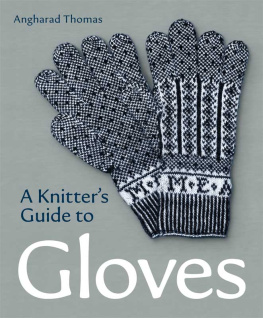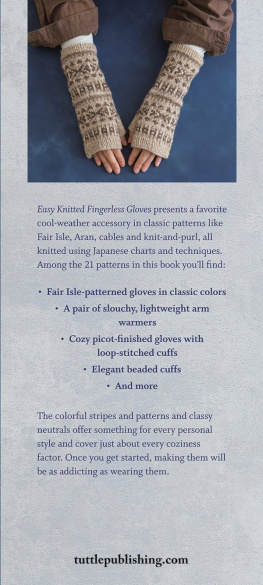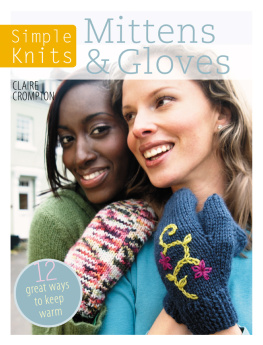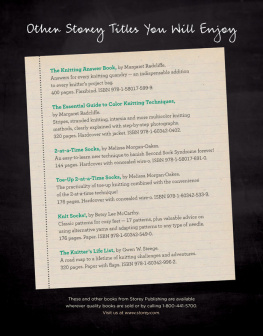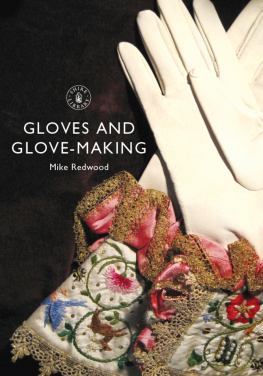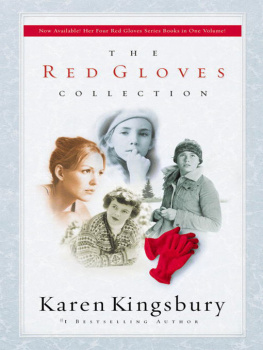Page List


Geof Cunningham

First published in 2023 by
The Crowood Press Ltd
Ramsbury, Marlborough
Wiltshire SN8 2HR
www.crowood.com
This e-book first published in 2023
Angharad Thomas 2023
All rights reserved. This e-book is copyright material and must not be copied, reproduced, transferred, distributed, leased, licensed or publicly performed or used in any way except as specifically permitted in writing by the publishers, as allowed under the terms and conditions under which it was purchased or as strictly permitted by applicable copyright law. Any unauthorised distribution or use of this text may be a direct infringement of the authors and publishers rights, and those responsible may be liable in law accordingly.
British Library Cataloguing-in-Publication Data
A catalogue record for this book is available from the British Library.
ISBN 978 0 7198 4173 6
Cover design: Sergey Tsvetkov
Dedication
To Mary Allen of Dent and Mary Forsyth of Sanquhar, glove knitters
INTRODUCTION
This book is about knitted gloves. Its a lot about knitting and its a lot about gloves. Both are fascinating, so together they must be even more so. Some of it is relevant for knitting of any kind. Why gloves? Why not hats or socks, as surely they are easier to knit? And cant warm, hardwearing gloves be bought for a small amount of money almost anywhere? So why knit them?

Knitting has been a fascination of mine for most of my life, and at times also my employment. I am a hand and machine knitter, and use either as the task demands. Knitted gloves have been part of my knitting repertoire since I started to make them about forty years ago, using patterns in Patons Woolcraft, that long-lasting staple of instruction and basic patterns. At that time, because I was a knitter, a friend gave me a pair of gloves, finely hand knitted in grey and red wool, shown in the illustration, which she said had come from her aunt who kept a post office in the Yorkshire Dales. These gloves fascinated me as I had never seen knitting so fine and so patterned and that must have been the beginning of my obsession!
Gloves that is, hand coverings with separate fingers have been found throughout recorded time, and making gloves, whether from fabric or skins, has continued ever since. The name for this hand covering with separate fingers is said to have various roots; however, my favourite is that the word glove came from an old Belgic word gheloove, meaning faithfulness, as gloves have been so strongly associated with love tokens.
For me, the interest in gloves lies in the endless variations: as protection from cold or hazards, as decoration or status symbol, as part of a uniform, as part of sports kit all these are possibilities for the glove. A glove can be the most exquisite work of craft and skill decorated with precious metals and jewels, or it can be see-through plastic of the sort that is given out at the petrol station or with hair dye, or to protect the hand from contamination during a pandemic. Gloves might be worn to protect the hands from irreparable damage in severe climates, or they might be of diaphanous lace covering the hands and arms, the only intention being decoration. Given the many uses to which a glove or gloves can be put, the many materials that gloves can be made from, and the differing resources that may be used in glove manufacture, this variety is probably infinite.
Religious writings, myths, legends, the Greeks and Romans, not to mention Shakespeare, all refer to gloves. Shakespeare was close to gloves, being the son of a glove maker, whose workshop can be seen in his home town of Stratford-upon-Avon, England. It would be natural to him to be familiar with the language of gloves. In the other contexts, from earliest times, gloves are given as tokens of affection, they are passed around with money in them, they are worn on hats as a signal of loyalty, and they are perfumed and given as gifts. They may or may not be worn, depending on particular circumstances. Judges wore white gloves when there were no instances of the death penalty in that session of the court, and there was a period when Wales was known as the land of white gloves. Gloves were apparently given as gifts to attendees of weddings and funerals.
These customs are recorded and found all over Europe, and were actively used or performed until relatively recently. Some associations still continue in modern form, such as the contemporary furniture removal firm that reassures prospective customers with its title of White Glove Removals, indicating the level of care that will be taken.
References to gloves permeate our speech, from phrases such as hand in glove, throwing down the gauntlet, quirk (a small piece of a leather glove that enables the finger to fit well), fit like a glove, and the gloves are off.
Despite the warming climate, our sedentary indoor lifestyles, central heating, use of the car and so on, gloves are still part of daily life, whether its for doing the washing up, for gardening, or when going out for a brisk, life-enhancing walk in nature! Thats where a pair of cosy hand-knitted gloves might come in handy! (Absolutely no pun intended!)
I hope this book conveys to you, the reader, just a fraction of the interest and excitement I have had from making, designing and studying knitted gloves, this extremely niche textile activity.
CHAPTER 1
UNDERSTANDING GLOVE KNITTING
Background: Why Gloves?
The Significance of Gloves
Gloves come in a vast range of types, either functional or decorative, or both in some cases. Gloves can protect the hands from dirt or germs, can insulate them from extreme temperatures, whether high or low, or give protection from danger in a work context and on the sportsfield. From delicate lace gloves, which can be knitted or crocheted, to embroidered gloves made from the finest materials for ceremonial occasions, or elbow-length evening gloves or chic leather gloves for driving, the whole spectrum of style is to be found. Gloves have a place in the English language too. We use phrases such as hand in glove, fits like a glove or taking the gloves off to add weight and colour to our meanings. Gloves have been used over the centuries as tokens of power or love, and later in this book examples of gloves used in these ways are shown.

The oldest pair of gloves in existence are those that were discovered in the tomb of the Egyptian king Tutankhamun, dating back over 3,000 years. It must be emphasized, however, that these were not knitted. gives an outline of the history of the glove as an item of clothing, where it will be seen that the knitted form appears quite late on.
Gloves Expressing Feelings Exploring Relationships

